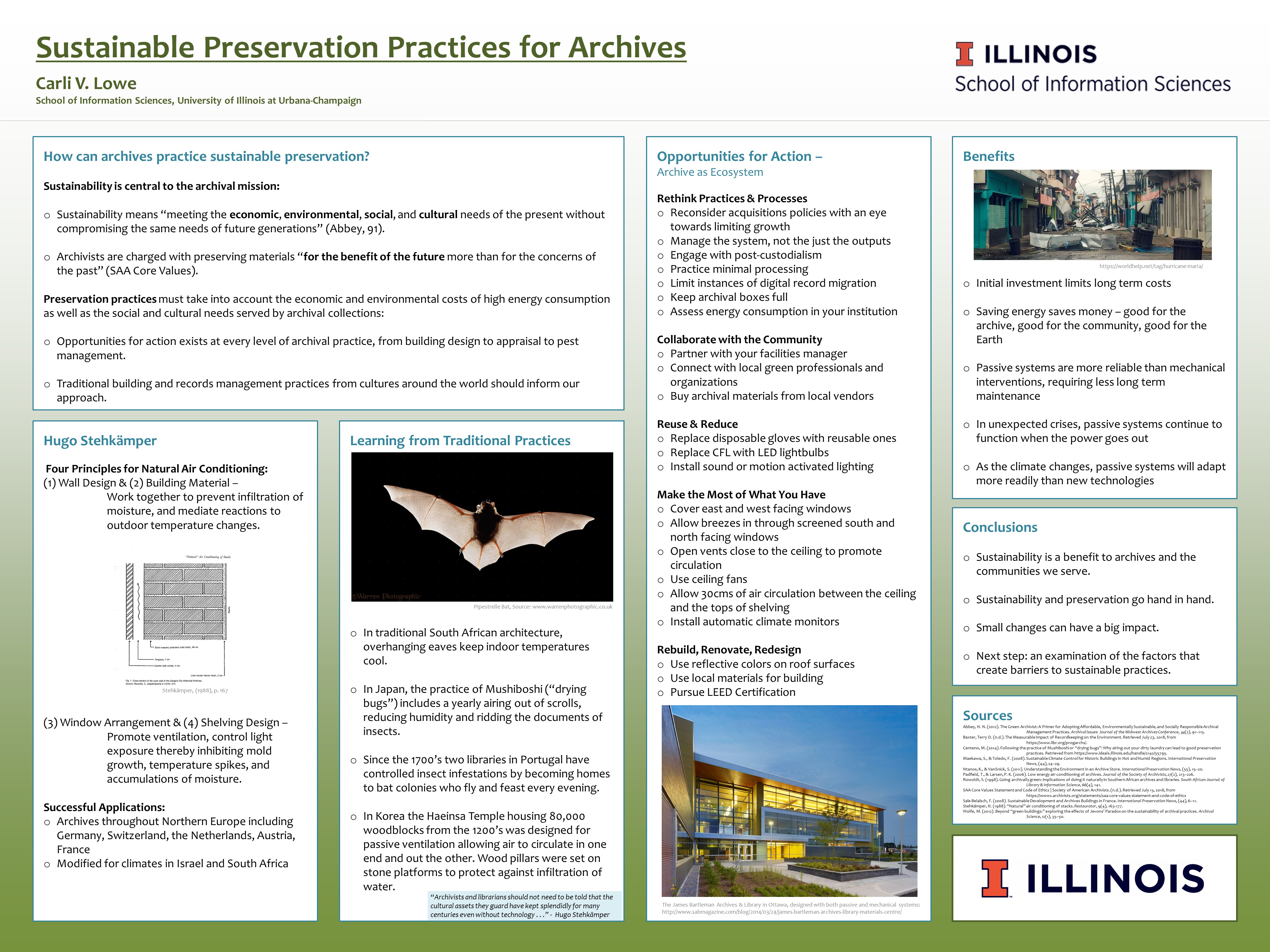I recently completed a research project about sustainable preservation practices for archives. I was initially inspired by an incidental sentence in Jessica Phillips’s 2015 article for The American Archivist, “A Defense of Preservation in the age of MPLP”. In the midst of a criticism of the More Product, Less Process approach, Phillips says, “. . . as more institutions attempt to ‘go green,’ the high energy consumption of the archives’ climate control systems may well come under scrutiny” (page 478).
This made me wonder how archivists were thinking about sustainability, and what opportunities existed for making archives more environmentally friendly. I was spurred onward by a conversation on the topic with archivist Sean Heyliger at the African American Museum and Library of Oakland. He confirmed my suspicion that many archives would hesitate to alter practices due to the potential cost of doing so, and the chronic lack of funding with which too many institutions must cope. I began to wonder what the landscape of sustainable preservation practices really looks like. Is it as costly as imagined? Are there small changes archives can undertake to increase the sustainability of their practices?
I gathered and read multiple articles on the topic, written between 1988 and 2018. From my research, I concluded that sustainable preservation practices have the potential to save money, while also providing more reliable preservation conditions for the materials in the archive’s care.

Large scale opportunities exist in reconsidering building design: The initial costs of building an archive for passive climate control can be high, but in the long term a passive system requires far less maintenance.
Small scale opportunities exist across the board: Simple acts such as keeping archival boxes full and allowing for the movement of air among shelves can stabilize temperature and humidity levels with little to no mechanical intervention.
Cultural practices may provide additional guidance: Materials were preserved for centuries before the use of electricity and fossil fuels. Drawing on the wisdom of traditional preservation practices will point us in the right direction.
I am looking forward to learning more about this topic, especially understanding more about the barriers to enacting sustainable practices.
